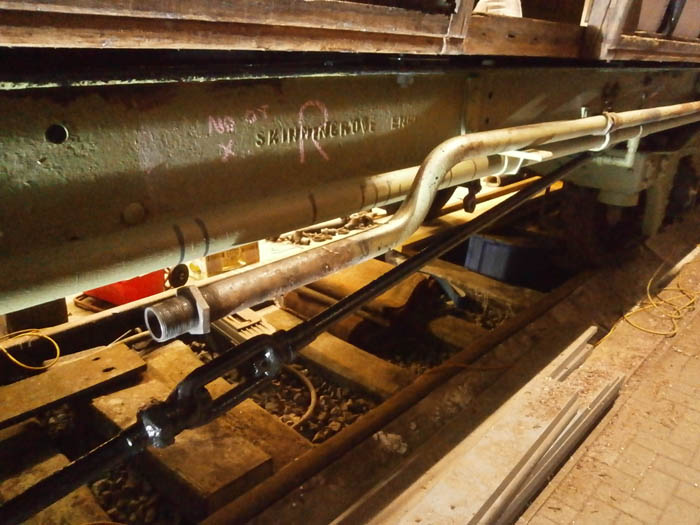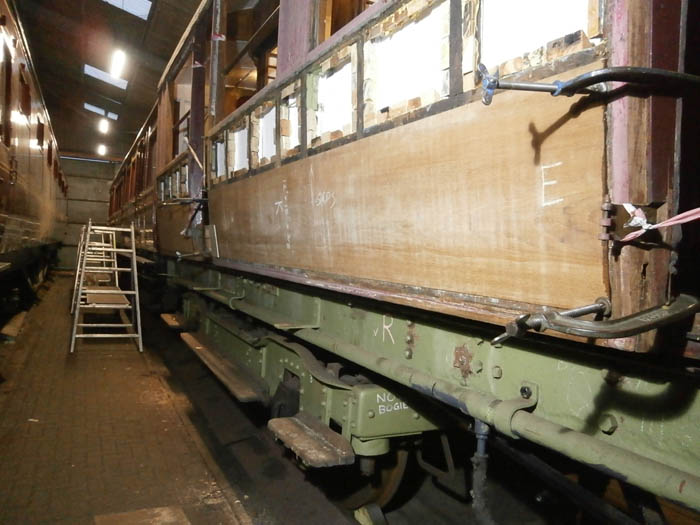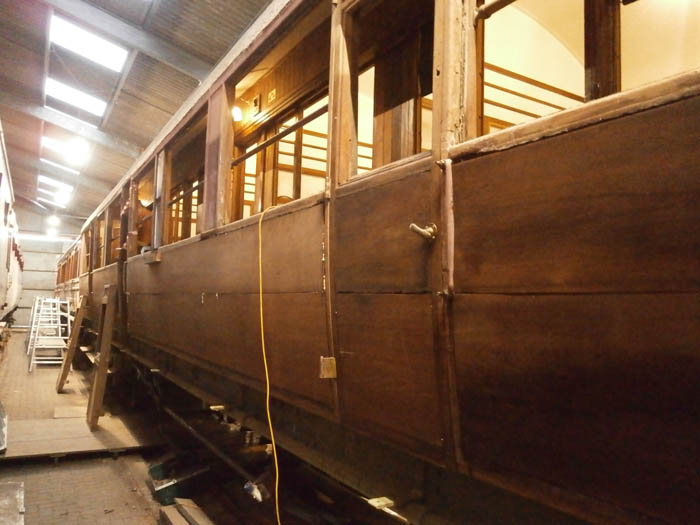
Winter 2019/2020
In late summer a major milestone was achieved. Brian Williams (with a little help) managed to lower the body back on to the chassis supported now by new rubber cushions. The photo below shows the first bolt (only hand tight) through the body and solebar. Quite a bit of jacking was required to manouvre the body into exactly the right position for the bolt holes to line up.

Next job was to get all the bolts in after counter-boring the body holes so the domed head galvanised bolts were flush with the floor level, then feeding the electrical wiring to the battery box on the north side. Then there was the steam heating plumbing to arrange. Several snags were encountered here - firstly, part of the main steam pipe had been replaced at sometime in the past and there were no take-off points to be seen, so this section had to be removed (NOT EASY) and the nipples put in. Second, the floor is about 3" thick and the heaters we were going to use had inlets designed only for a 1" floor thickness, so much longer items had to be fashioned from brass bar.

In early January 2020 we had a shunt tound and the TK was moved to no. 5 road to be closer to the work benches. Preparation for the fitting of the teak panels to the south side started immediately. The checks in the framing which contain the panels had supposedly been cleaned of old pins and all other obstructions. Not so. Several man-days were spent removing pins, old putty and various other lumps and bumps. While we were at it, some of the pink undercoat (from Falkirk days) was removed from the adjacent framing.

Before the teak panels could be pinned and glued in place they had to be sanded on the outside, drilled to prevent the pins from causing splits, coated with primer then intumescent paint on the inside surface, then the ends sealed with gold size to minimise moisture ingress. We started with the smaller panels first, then worked up to the larger ones as any mistakes or accidents would be disastrous.

As January unfolded, several more panels were prepared and pinned in place. Once the panels on both sides of a door aperture were finished, the door could be put back in place. The first door to be mounted was door #2 near the SE corner. When taken from storage it was found that the lower panel of this door had swelled out considerably, principally due to the amount of rain which had leaked into the storage area of the pigeon van (we suspected). The lower panel was glued back into the correct profile then the door re-hung. Fitting of the lower side panels to the south side was completed in early February.
